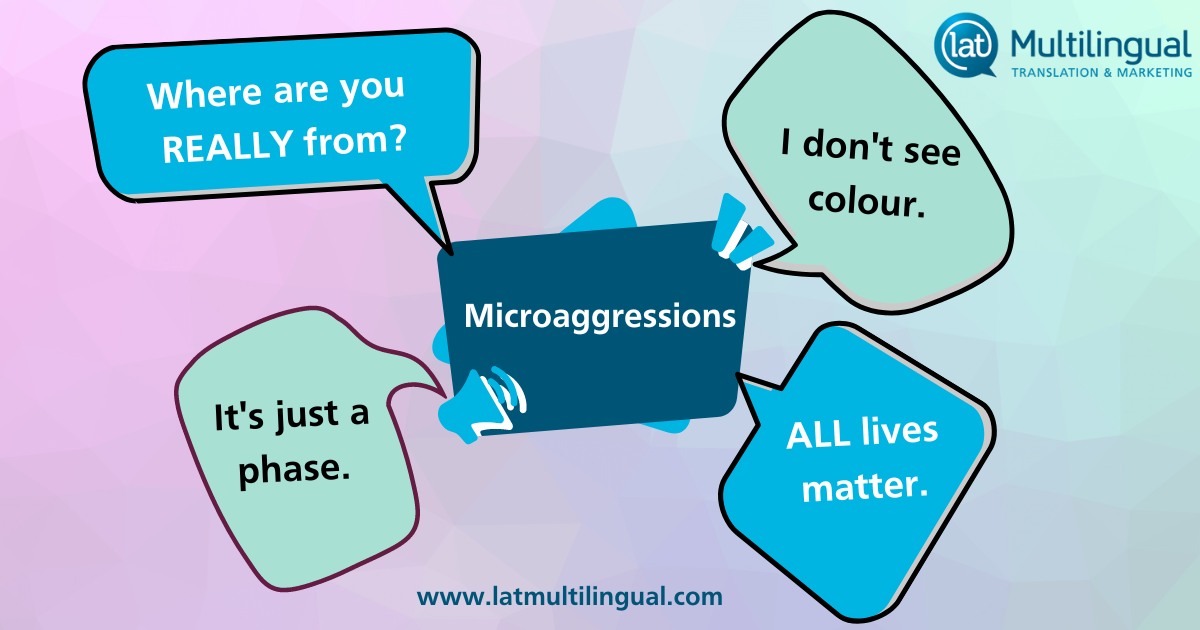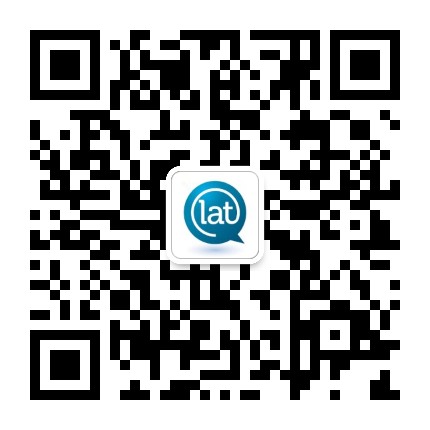Our markets are diverse. Brands that want to engage meaningfully with their customers are opening their horizons and making sure everyone is represented, not just one segment of our population.
Reaching consumers from various parts of the world or belonging to a wide variety of cultural and social segments requires diversity marketing. Therefore, brands and marketers should be mindful and be part of the solution when it comes to fostering change and inclusion in our societies.
However, amidst the effort of representing inclusion and diversity, marketers and brands tend to commit unintentional acts of discrimination based on deep-rooted beliefs and prejudices, commonly known as microaggressions.
Diversity is enriching. At LAT, our team is diverse. We are passionate about the positive outcomes that diversity contributes to achieving by bringing a wider variety of viewpoints to the table. Additionally, our team is committed to supporting companies and organizations that share our passion for inclusivity and diversity.
We want to help marketers mitigate these unconscious biases with a mindset that can permeate all aspects of marketing.
Let’s dig deeper into microaggressions and how marketers can avoid them in their communications:
What are Microaggressions?
Microaggressions are indirect comments or actions that various groups of people face. They arise from simple sentences or gestures that reflect implicit bias or stereotypes. These are spoken as a compliment (ex. you’re beautiful for a transgender), a random question (where are you really from?), or a non-verbal action (avoiding eye contact with a racialized person).
These comments or questions often hurt people’s feelings, self-confidence, and mental wellness. Therefore, these minor microaggressions have major impacts.
Disseminating stereotypes and putting someone down can reinforce hurdles in one’s life at the workplace, daily tasks, etc. Each individual deals with these experiences in their capacity as they are affected by comments.
We all need to understand these comments or questions that may seem harmless at a glance but can impact someone deeply. You want to showcase your company with sound branding that the audience can relate to and trust.
Impact of Microaggressions in Marketing Campaigns
Several instances of offensive marketing campaigns have resulted in the discontinuation of certain advertisements and brand imagery that is offensive to certain communities.
Consumers now demand diversified marketing campaigns, as Black, Indigenous, LGBTQ+ and other groups face inequality in pay and inclusion in the industry.
If marketers focus more on inclusion, they can avoid insensitivity in marketing.
Not only is diversity and inclusion morally correct, but it also makes good business sense too. Defining a brand image means communicating with audiences as individuals and including people of all ages, colours, classes, genders, etc., with diversified content that represents present-day society.
3 Genuine Ways Marketers Can Avoid Causing Microaggressions
1. Inclusive images in marketing campaigns
An inclusive online presence needs to respect everyone. We need to walk the talk. If a website and other communication messages are inclusive but the business is not, it reflects a lack of leadership in defining a company culture that supports DEI (Diversity, Equity, and Inclusion).
Creating marketing materials that appeal to a diverse audience is just the first step. A brand that supports inclusion should be strengthened by action from everyone on the team. Being authentically committed to being inclusive is the best marketing approach. It shines through.
2. Authenticity matters
Marketing should reflect the brand’s values in every possible way. Published images, content, social media outreach, web, etc. all need to reflect the company’s true beliefs.
Today, social media platforms and other digital mediums dominate the dissemination of news and trends by employees and customers at large.
Hence, it becomes imperative for a brand to be authentic and take accountability for its own diversity and inclusion policies, and teams need to feel truly aligned with their company’s vision.
Also Read: Modern Advertising and marketing need inclusion of diversity – Here’s Why
Transparency is the best approach to gaining trust. To reach customers effectively, it is essential to create culturally sensitive messaging for each community and be respectful of consumers’ identities, preferences, and backgrounds.
It is not enough to cultivate an online presence that promotes inclusive principles but leadership that does not. It would be deceptive and sooner or later… obvious.
Inequality cannot be tackled by merely releasing messages on diversity. It should be an integral part of corporate strategy. We all need to ensure diversity, equality, and inclusion are embedded in the mindset of the team.
In the journey of being authentic, brands must also be aware.
3. Examples of microaggressions to avoid
We all want to avoid inadvertently saying something hurtful. It is therefore important to rethink certain expressions that are insensitive. Here are a few examples of sentences or expressions we may want to avoid as they can be perceived as microaggressions. Find more examples here.
- “We are all one race: the human race.”
- This indicates that the experiences of all people are the same. Yet we know very well that this is not the case.
- “Everyone can succeed in society if they work hard enough.”
- Many people struggle against invisible barriers that impede their success.
- “I don’t see colour.”
- This sentence ignores the experiences of so many people. Not acknowledging the person’s identity can show a lack of respect.
- “All lives matter.”
- Yes, but in this context, it rejects the real struggle of Black people and anti-black racism. The sentence was often used in response to the Black Lives Matter movement.
4. Get Creative
Marketers who are responsible for differentiating and distinguishing their brands while avoiding stereotypes and implied offensive statements can practice the following:
- Master your tone: Understanding company values and finding its personality are all part of developing a sound marketing strategy. It can also provide marketers with insights on what type of messaging is appropriate, and what is not.
- Know your audience: To portray a family using an image of a man, a woman and children seem common, but it also assumes gender-specific roles that might feel offensive to certain customers. The concept of traditional families has changed, and people identify modern families with racial diversity, same-sex marriage, and more. Recognizing who you are engaging is a critical element of avoiding microaggressions.
- Be topical and true: Take note of what’s happening in current events and tie it into your marketing messaging by walking the fine line between newsjacking and naturally integrating the current topics with your brand messaging. If done right, it can deliver extraordinary results.
There you have it…
As a multicultural marketing company, we care about diverse messaging, and we’ve taken rigorous steps to build a more inclusive workplace. LAT Multilingual believes that communication is key to building relationships.
We create opportunities for brands to engage with their audiences with well-crafted messages that are aligned with cultural preferences and respectful of differences.
Should you wish to discuss your marketing campaigns to ensure they will resonate positively with your target audience, we are here to help you!















